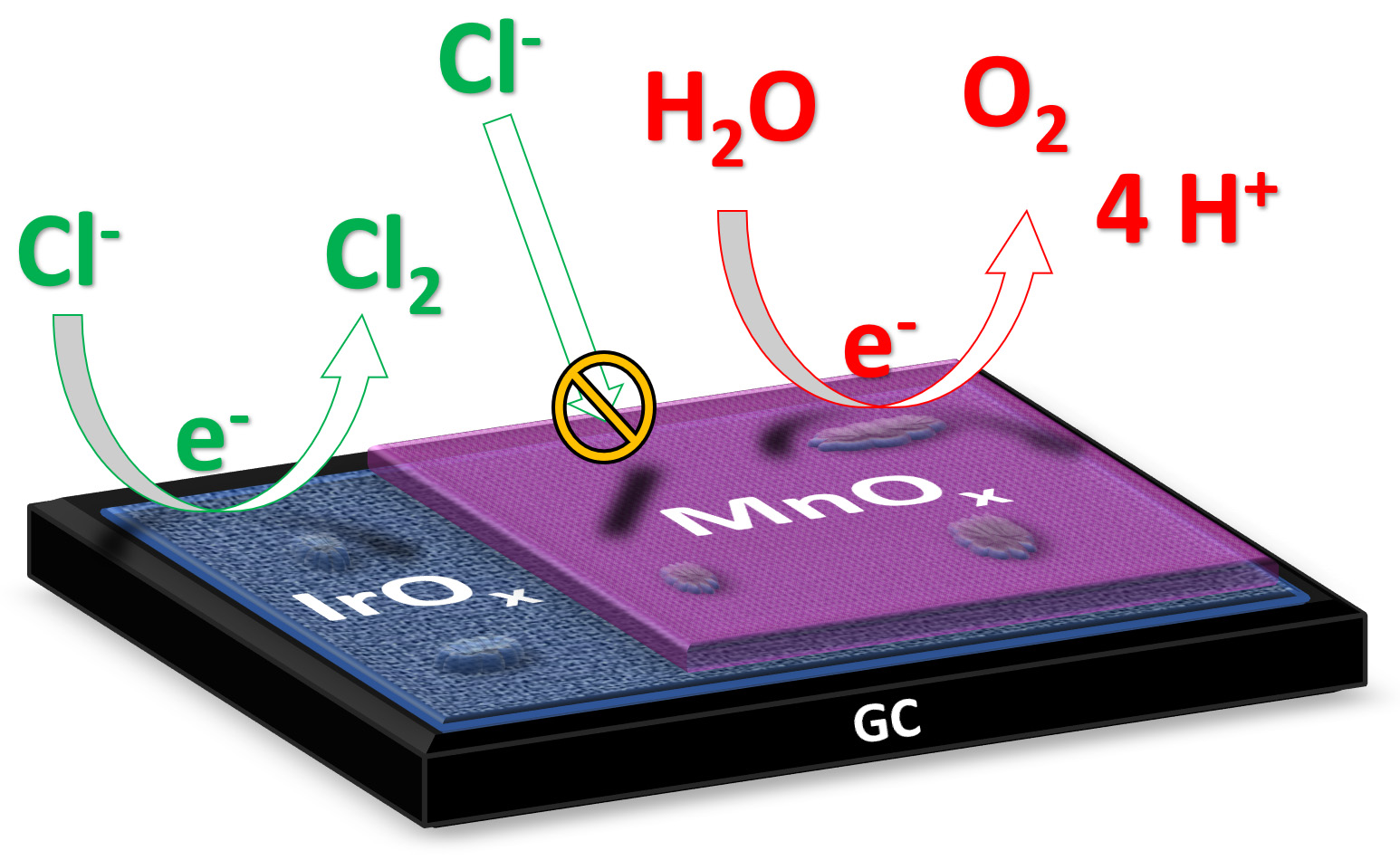
A step closer to sustainable energy from seawater
The research group headed by Leiden chemist Marc Koper has discovered a catalyst that minimizes the production of chlorine gas during salt water electrolysis. The invention can enable the direct production of hydrogen from seawater. The article has been published in the Journal of the American Chemical Society.
Chlorine gas and oxygen
'In the electrolysis of salt water, such as seawater, the ultimate goal is to produce hydrogen at the cathode,' explains PhD student Jan Vos from the Leiden Institute of Chemistry. 'The product formed at the anode is ideally oxygen, because that is harmless to the environment.' However, during salt water electrolysis toxic chlorine gas can also form at the anode. The researchers have now produced a catalyst that minimizes the formation of chlorine gas in favour of oxygen formation. Vos explains: 'The catalyst consists of two metal oxides: iridium oxide with a layer of manganese oxide of only a dozen nanometers thick. Iridium is a material that exhibits high catalytic activity for the formation of both oxygen gas and chlorine gas; the manganese oxide acts as a kind of membrane that prevents the supply of chloride ions and suppresses the formation of chlorine gas. '

Electrolysis
During the electrolysis of water, electricity is passed through the water to split it into other substances. In the desired reaction, liquid water (H2O) splits into oxygen gas (O2) and hydrogen gas (H2). In salt water, sodium chloride (NaCl) is present as dissolved sodium and chlorine ions (Na+ and Cl-). In this case, a second reaction can also occur during the electrolysis, in which the chlorine ions are converted into chlorine gas (Cl2).
Sustainable energy
The electrolysis of water is an important step for the production and use of hydrogen as an alternative energy carrier. An anode that counteracts the formation of chlorine gas enables water electrolysis where it is not necessary to first rid the water of dissolved salt. This still costs a lot of energy and capital. It would allow the direct production of hydrogen from seawater, thereby relieving the rare freshwater reserves on earth.
According to Vos, a useful side effect of salt water electrolysis is the production of very pure fresh water. 'If the extracted hydrogen gas is ultimately used as fuel, for example in a fuel cell of a car, the hydrogen reacts back to water with oxygen gas from the atmosphere. That way, the large-scale application of water electrolysis and hydrogen in fuel cells will lead to large quantities of this ‘waste product’: pure water! In a future where water shortages become an ever more acute problem, this would certainly not be undesirable. '
Chloride blockade
The research sheds new light on a question in chemistry that has been going on for decades. 'We originally had no idea why materials based on manganese oxide had such a high selectivity towards oxygen. We assumed that it was purely a catalytic property of the material, but possible effects of diffusion barriers: the selective blocking of the transport of chloride ions... That did not even come to mind! In fact, it is a very basic, effective solution to a very complex problem. That has radically changed our research direction. '
Selectivity
The discovery has implications for selectivity in electrolysis. Selectivity is an important criterion for how well a catalytic converter works. In many (electro-)chemical processes, it is possible to form different products during a reaction, whereas what we want is for only the required product to be formed. The way to influence selectivity is usually to select the catalyst very precisely and to fine-tune it, but this takes a lot of time and money. Moreover, it is not always possible to combine high selectivity with high activity, another important characteristic.
According to Vos, the research fits nicely into an emerging, alternative trend in electrocatalysis: the use of certain coatings to improve a catalyst. 'Such a layer prevents unwanted reactants from reaching the catalyst. This allows an active but non-selective catalytic material to be made selective in an alternative way. '
Reference
Vos, J.G.; Wezendonk, T.A.; Jeremiasse, A.W. en Koper, M.T.M., 2018. MnOx/IrOx as Selective Oxygen Evolution Electrocatalyst in Acidic Chloride Solution. J. Am. Chem. Soc. , article ASAP. DOI: 10.1021/jacs.8b05382
